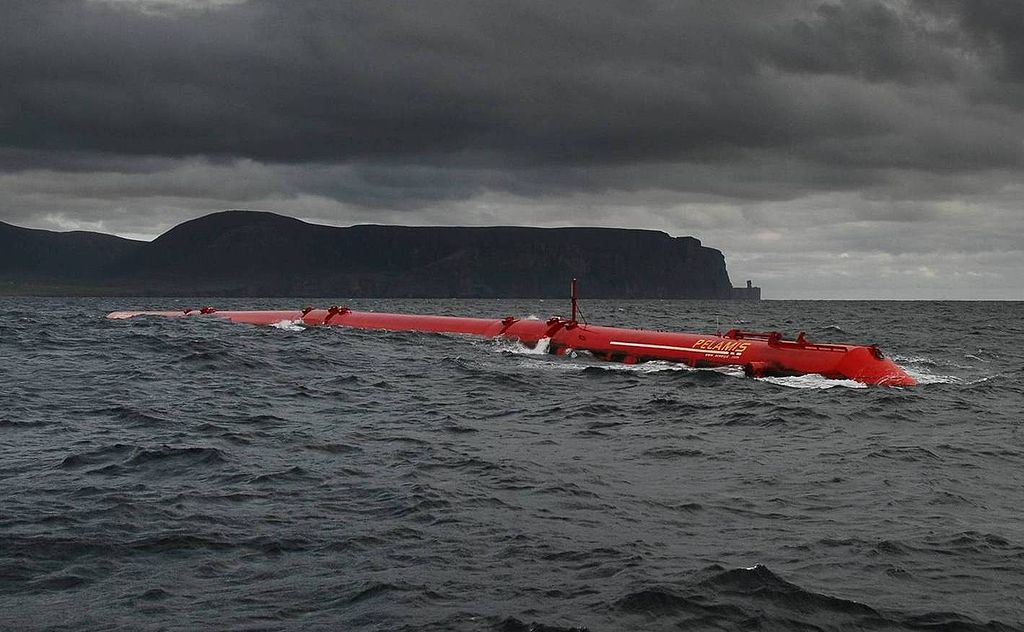Wave energy is consistently characterized as a transformative force in the realm of renewable energy, poised to redefine humanity’s interaction with power resources. This modality, while awe-inspiring in its potential to harness the kinetic might of oceanic waves, provokes an essential inquiry: Is wave energy inherently detrimental to the environment? Exploring this multifaceted question necessitates an examination of the operational mechanics of wave energy technology, its ecological ramifications, and its sustainability efficacy.
At its core, wave energy is derived from the movement of surface water caused by wind, gravitational forces, and other natural phenomena. Technologies such as point absorbers, oscillating water columns, and overtopping devices convert this kinetic and potential energy into electricity. Operational efficiency is situated at the heart of wave energy extraction; however, the methodology raises pertinent environmental concerns. The impact on marine ecosystems, alteration of sediment transport, and potential disturbance to coastal landscapes form the crux of the dialogue surrounding wave energy’s environmental footprint.
One of the most pressing issues is the ecological ramifications of deploying wave energy converters (WECs) within marine environments. Marine habitats, including coral reefs and kelp forests, are pivotal to biodiversity and ecosystem health. The introduction of large-scale WEC installations can significantly disturb these habitats through physical alteration and acoustic emissions. Structural integrity, habitat complexity, and species behavior are often jeopardized by the presence of artificial constructs within natural settings. These disturbances can lead to shifts in species composition or loss of biodiversity, prompting concerns over long-term ecological stability.
Moreover, the mechanical operations of wave energy devices may inadvertently affect local marine life. Potential risks include entrapment of organisms, alterations in feeding and breeding behaviors due to noise pollution, and disruption of migratory pathways. These effects underscore a critical divergence in understanding: while wave energy harnesses a renewable source, it also interacts with intricate marine ecosystems in potentially harmful ways. When assessing the overall sustainability of wave energy, it becomes imperative to mitigate these interactions through careful engineering and site selection.
Sediment displacement is another environmental concern associated with wave energy infrastructure. The construction and maintenance of WECs may disrupt sediment transport processes, which are vital for maintaining beach profiles and preventing coastal erosion. The dynamics of sediment movement can be dramatically affected, resulting in undesirable consequences such as increased accretion or erosion downstream from installations. Such changes can lead to habitat loss for terrestrial and marine species, emphasizing the need for a holistic understanding of coastal systems in wave energy planning.
Furthermore, the carbon footprint associated with the lifecycle of wave energy infrastructure cannot be neglected. The production, installation, maintenance, and eventual decommissioning of WECs require substantial energy investments, potentially undermining the net environmental benefits of harnessing this renewable resource. It becomes essential to evaluate the embodied carbon within the materials used and the energy costs associated with construction and operation. Strategic advancements in material science and engineering practices can significantly mitigate these impacts, advocating for a transition towards eco-friendly materials in the developing wave energy sector.
In addition to ecological impacts, socio-economic factors should also be considered when discussing the environmental implications of wave energy. The establishment of wave farms often incites stakeholder conflicts among fishermen, conservationists, and energy producers. Rural communities dependent on fishing may find their livelihoods jeopardized by the advent of energy projects, provoking resistance and scrutiny. Effective stakeholder engagement is crucial for navigating these socio-political complexities, ensuring the fair distribution of the benefits associated with wave energy production.
Despite these challenges, it is essential to acknowledge the considerable advantages wave energy offers in combating climate change. As global reliance on fossil fuels continues to exacerbate environmental degradation, the shift towards renewable energy sources becomes increasingly imperative. Wave energy has the potential to contribute significantly to global energy needs while significantly reducing greenhouse gas emissions. When deployed with careful consideration of ecological and social dynamics, the integration of wave energy systems can lead to a net gain in environmental quality.
Innovative methodologies and technologies are emerging to enhance the compatibility of wave energy installations with marine ecosystems. Eco-design principles are being integrated into the planning and engineering processes, promoting the development of WECs that minimize ecological disruption. For instance, creation of artificial reefs around installations can foster marine biodiversity, turning potential disruptions into opportunities for ecological regeneration. Such synergies exemplify the forward-thinking approaches necessary for reconciling energy needs with environmental stewardship.
In summary, the dialogue surrounding wave energy and its environmental impact is characterized by complexity and nuance. While there are substantial concerns regarding marine ecosystems, sediment dynamics, and socio-economic interactions, these can be addressed through informed engineering practices, stakeholder engagement, and innovative solutions. The transformative potential of wave energy in addressing climate change cannot be overlooked; however, its implementation must be grounded in a commitment to ecological integrity and sustainable practices. Thus, the question of whether wave energy is bad for the environment encourages a broader reflection on humanity’s ability to harness natural resources responsibly, optimizing energy yields while safeguarding the delicate balance of our planet’s ecosystems.










